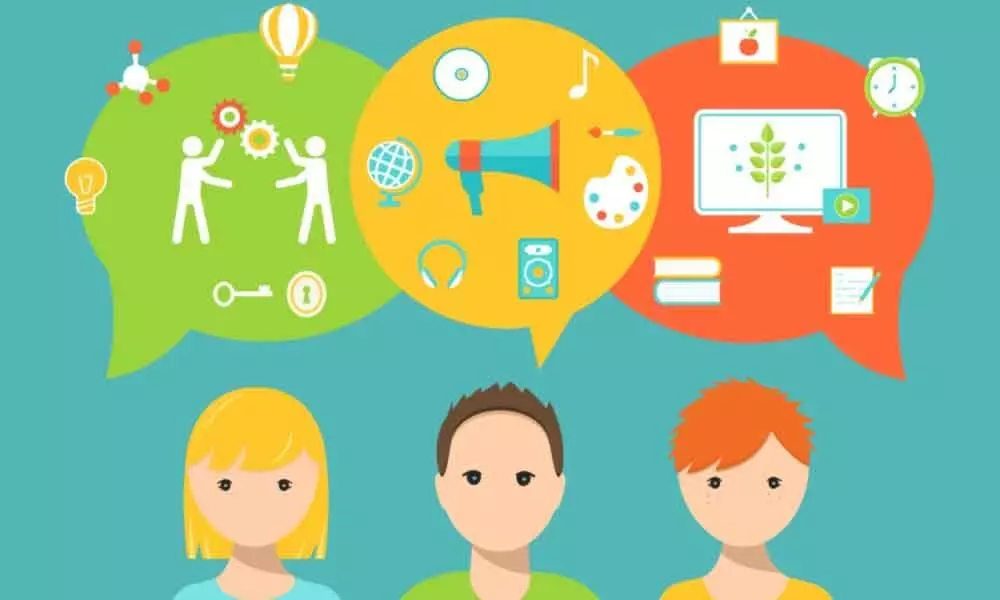A comprehensive guide on different learning styles

It’s obvious that the labels aren’t important when you realize that there are many different theories of learning styles, and each theory uses different terms.
Memletics
It's obvious that the labels aren't important when you realize that there are many different theories of learning styles, and each theory uses different terms. Another theory that takes into account some additional learning styles is called memletics. This theory takes the basics of the VARK model and adds in a few different categories. Memletics includes visual, auditory, and kinesthetic that is seen in the VARK model, and also adds in the following types of learners:
• Verbal learners who learn best by speaking
• Logical (mathematical) learners who learn best by using logic and reasoning (these learners are typically mathematically inclined)
• Social (interpersonal) learners who learn best in groups
• Solitary (intrapersonal) learners who learn best alone
Visual learners
Do you ever remember taking a test in school and thinking "I don't remember the answer, but I remember I had it highlighted pink in my notes"... then you might be a visual learner.
That's because visual learners remember and learn what they see the most. This could include videos and pictures, but it doesn't have to. Visual learners do well with spatial reasoning, charts, graphs, etc. Often, visual learners "see" words as pictures or other objects in their head, and they often use their right brain to process information.
One of the many benefits of being a visual learner is that the human brain processes visual information much faster than plain text. As a visual learner, you can take in and retain a lot of information really quickly because you prefer this processing method that humans are already very good at.
When studying and learning, visual learners prefer the use of maps, outlines, diagrams, charts, graphs, designs, and patterns. When taking notes, these students are more likely to organize their notes into visual patterns. They might use charts or diagrams; they might separate their page of notes into different sections. Many visual learners also do well with color coding their notes with different colored pens or highlighters.
Careers for visual learners:
Visual learners are often pulled toward, and do well in, STEM fields. STEM stands for science, technology, engineering, and math. Specifically, some careers include photography, construction, graphic design, interior design, architecture, physics, advertising, engineering, and surgery.
A note for teachers of visual learners:
Sometimes these students might stare out the window or doodle in their notes. If this is the case, let them. Locking their eyes on you constantly might be too much visual stimulation, and that flower they're drawing next to their notes might help them remember that point by connecting it to their visual drawing.
It's also easy for visual learners to get overwhelmed by a lot of visual input. If the classroom setting is chaotic with a lot of students moving around, it might be too much for them to take in. The design of your classroom is also very important to visual learners. If there is a lot of clutter or too many posters adorning the walls, this can overwhelm the mind and processing of a visual learner.
For some visual learners, it also could actually be helpful for them to pay careful attention to your movements. They might remember the silly hand motion you made or the way you pointed to a country on the map. Keeping that in mind when delivering your lessons can be very helpful.
Lesson ideas to help visual learners
• Use colors. Just like these learners tend to color code things themselves, it can be really helpful for them if you color code your notes as you write them or post them. As a homework or in class assignment, you could have students annotate/read actively, and use different colors for different things you want them to look for. For example, they could highlight dates in blue and names in yellow.
• Draw reasoning. In math, teach students how to draw out their reasoning (rather than verbally explaining).
• Use gestures. As you're teaching, be aware of your body language. If you include gestures and hand motions when you speak, it will help your visual learners pay attention and make connections.
• Posters. As a project or class assignment, students can make posters illustrating key concepts. Once finished, they could even present their posters to the class, which would appeal to auditory learners. You can also hang these posters on the wall when students are done as decorations and to help drive home important topics. Just remember to cover them up or take them down during assessments if they give away too much information.
• Charts and graphs. Use technology to help students visually see information by creating charts and graphs. This is often used in a math and science setting, but can be used in other disciplines as well. For example, in gym class, students could keep track of how many push ups, sit ups, etc. they can do and then you can create a class chart or graph with the data.
• Draw the text. In the language arts classroom, pick out a portion of the text with especially vivid imagery. Instruct students to draw a picture of what the writing describes. This helps students with close reading and understanding of the text.
Auditory learners
Do you sometimes talk to yourself when you're thinking really hard, studying, or trying to organize something? If that sounds like you, you're likely an auditory learner.
Auditory learners learn best by hearing and carefully listening. This can include hearing things from external sources, as well as hearing themselves talk. They are very likely to volunteer to answer questions and to actively participate in classroom discussions.
Auditory learners have a great advantage in the classroom because they're not afraid to speak their mind and get answers to their questions. While reading/writing learners might not even realize they have a question until they've had time to go back and process their notes, auditory learners learn by listening and speaking, so they process through information very easily right there in the classroom.
Lesson ideas to help auditory learners
• Audiobook. Give students the option to listen to an audiobook- this can be effective with novels as well as textbooks.
• Socratic Seminar. This is a type of discussion where the students lead the discussion. The teacher provides some topics to talk about, and then the students take over. By sitting in a circle and having a more laid back atmosphere, more students are likely to join in the conversation. Often auditory learners tend to lead these discussions, and it gives them a chance to shine and be rewarded for their talking that can get them in trouble in other situations. Teacher Kelly Gallagher offers a great handout called trace the conversationthat can help auditory and visual learners with Socratic seminars. There are many ways to conduct socratic seminars; the National Council of Teachers of English has a great explanation.
• Speeches. The often hated, but necessary, school assignment that many students dread is actually often a favorite of auditory learners. This type of assignment is where auditory learners feel in their element. Speeches can be short and impromptu or long and planned, and they can be done in any subject.
• Record notes. You can either record yourself speaking or give your students permission to record during your lectures so that they can go back and listen. You can also encourage students to record themselves reading their own notes.
• Text to speech. This is something students can do on their own, but they might need your prompting or feel better about doing it if you give them permission. When writing essays, students can use speech to text to capture their thoughts. It can also be beneficial to then use text to speech to proofread and catch errors.
• Debate. A structured debate is a really beneficial way for auditory learners to get their ideas across. This can be done at all grade levels and in all disciplines. Here is a great resource for some debate ideas, as well as different debate formats for different grade levels.
Reading/writing learners
Do you tend to zone out when people are talking to you or you hear a lecture? Would you rather read the transcript or get the information from a book? Then you're probably a reading/writing learner.
Reading/writing learners learn best by, well, reading and writing. They often relate to the famous Flannery O'Connor quote "I write because I don't know what I think until I read what I say." Verbal input can often go in one ear and out the other for these types of learners. For them, seeing notes on the board or on a PowerPoint is really important, as is taking their own notes.
These students learn best from books, lists, notes, journals, dictionaries, etc. Some things these students might do to intuitively help themselves learn are rewriting their notes, using flash cards, adding notes to pictures or diagrams, choosing a physical book over an audiobook, and using closed captions on videos.
Careers for reading/writing learners:
A common and obvious career choice for reading/writing learners is writing, but if this is your learning style, you're definitely not limited to writing. Editing, advertising, researching, translating, and economic advising are also great career choices that would be a good fit.
A note for teachers of reading/ writing learners:
While these learners are often your typical "good student" they can really struggle to learn from lectures or completely auditory methods. They may not respond well to class discussions, and need some more time to process things that they hear. If you give them some time to write their thoughts down before asking them to share out loud, they will feel less stressed and will be able to process their thoughts.
Every teacher has had that student who needs more time before you move on to the next slide, even though you're done explaining and all the other students are ready to move on. A reading/writing learner is most likely that student, and when you understand their learning style it's easier to cut them a little slack. Sometimes they struggle to get all their notes down because they are trying to write down every single thing you say. You can really help them by working with them to pull out the most important parts of your lecture and to paraphrase what they hear.



















